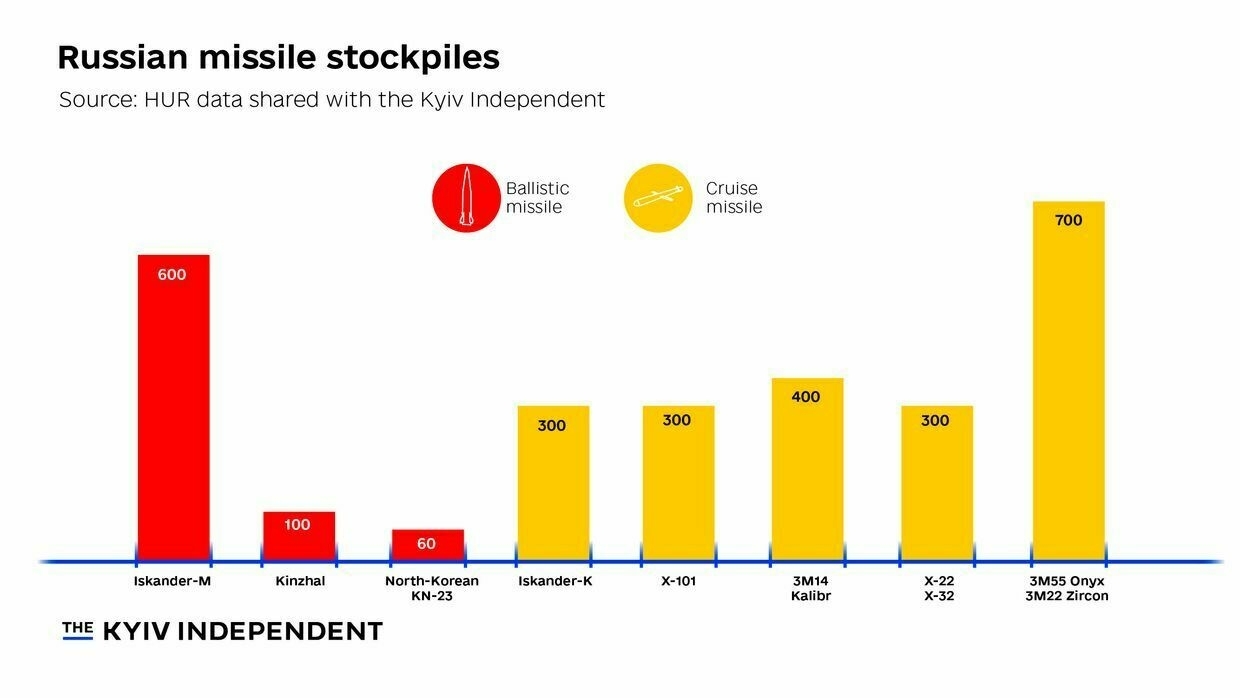
Russia’s production of ballistic missiles has increased by at least 66% over the past year, according to data from Ukraine’s military intelligence (HUR) shared with the Kyiv Independent.
According to data obtained by HUR, Moscow is now producing 60 to 70 Iskander-M — the ballistic version of the missile — and 10 to 15 hypersonic Kinzhals per month.
This compares to a reported 40 Iskander-Ms in May 2024, and a reported 4–5 Kinzhals in April 2024.
At the lower range, this is an increase in production of 66.67%. At the higher range, 88.89%.

Ballistic attacks on Ukraine have become more deadly in recent months as stockpiles of air defense missiles, particularly for U.S.-made Patriots, have dwindled.
The figures shared with the Kyiv Independent show Russian stockpiles of “almost 600 Iskander-Ms” and “over 100” Kinzhals.
At the end of 2022, Military Intelligence Chief Kyrylo Budanov claimed Russia was almost out of Iskander ballistic missiles. By December 2024, HUR spokesperson Andriy Yusov noted that Russia had increased production to somewhere between 40 and 50 Iskander missiles per month.
Russia’s expanded production is a cause for alarm in Ukraine.
If HUR’s figures are correct, Russia’s production of ballistic missiles today outnumbers total production of PAC-3 MSE missiles for Patriot air defense systems, the preferred anti-ballistic defenses for much of Europe, which Lockheed Martin hopes to boost to 650 per year by 2027.
Other Western systems like the SAMP/T and IRIS-T have not proved effective against ballistic missiles.
Russia has moreover reportedly outfitted the newest Iskanders with radar decoys and less predictable flight paths, making them harder to shoot down even with Patriot systems.

Ukraine’s military intelligence has also estimated that Russia is holding a stockpile of 60 North Korean KN-23s. These missiles are similar to the Iskander-Ms, but carry a one-ton warhead, more powerful than their Russian equivalents.
The figures shared with the Kyiv Independent further show that total production for cruise missiles has also continued to grow.
Russia can produce 20 to 30 Iskander-Ks, 60 to 70 X-101s, 25 to 30 Kalibrs, up to 10 X-32s and 20-30 Onyx and Zircon anti-ship missiles.
A massive Ukrainian attack on Russian airfields on June 1 may have restricted Russia’s ability to launch several of these cruise missiles.
Tu-95M3s often carry Kh-55/Kh-555 or the newer Kh-101 and Kh-102 air-launched cruise missiles. The Tu-22 carries the Kh-22 missiles.Both of these types of aircraft are among those reported to have been damaged in Ukraine’s Operation Spiderweb.
During wartime, Ukraine has also built out its production of its own cruise and ballistic missiles.
But large-scale production of types of missiles depend on major industrial zones that often fall victim to Russian air strikes — particularly when limited air defenses are being rationed.
 The Kyiv IndependentMartin Fornusek
The Kyiv IndependentMartin Fornusek
